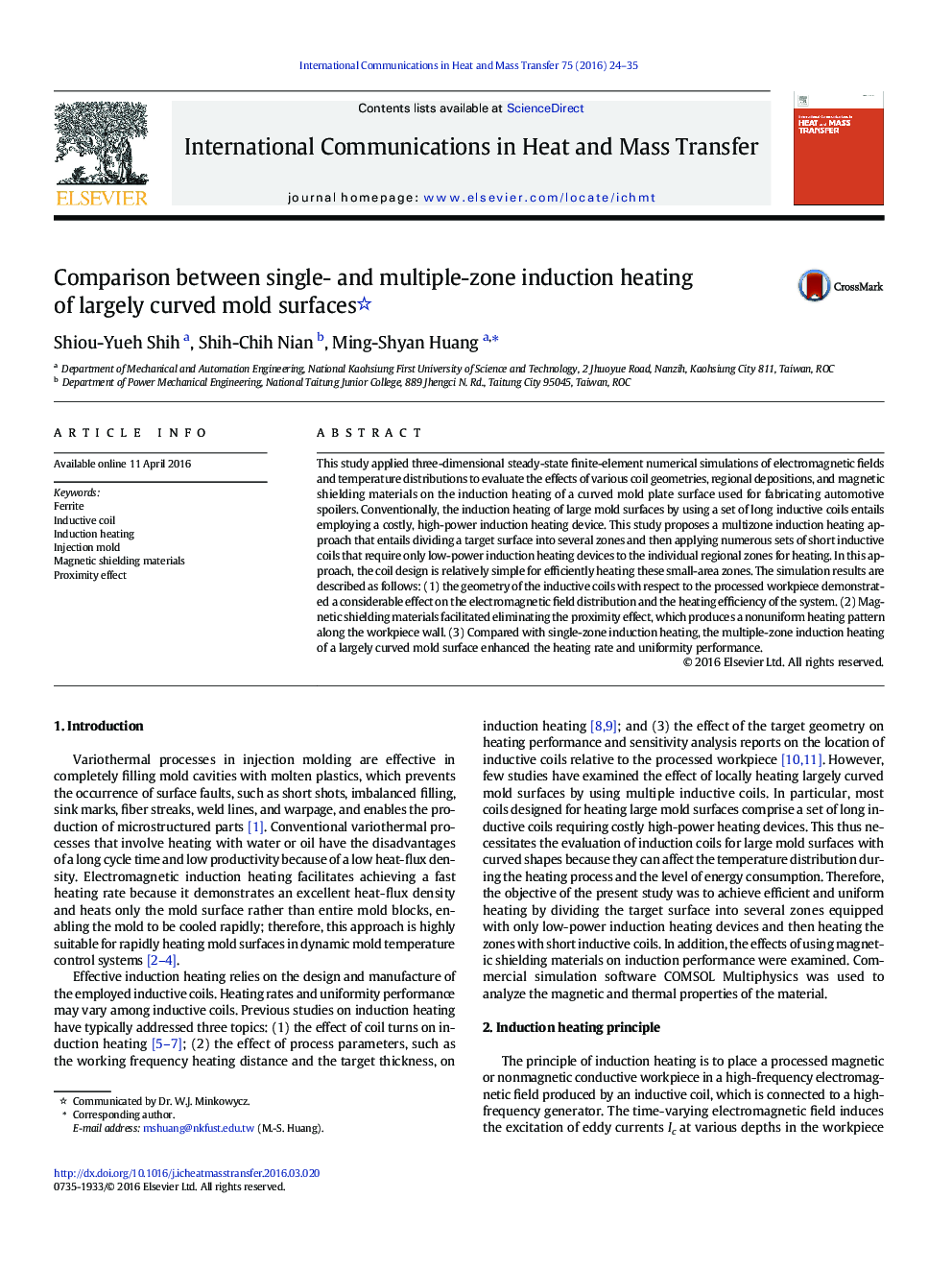| Article ID | Journal | Published Year | Pages | File Type |
|---|---|---|---|---|
| 7053249 | International Communications in Heat and Mass Transfer | 2016 | 12 Pages |
Abstract
This study applied three-dimensional steady-state finite-element numerical simulations of electromagnetic fields and temperature distributions to evaluate the effects of various coil geometries, regional depositions, and magnetic shielding materials on the induction heating of a curved mold plate surface used for fabricating automotive spoilers. Conventionally, the induction heating of large mold surfaces by using a set of long inductive coils entails employing a costly, high-power induction heating device. This study proposes a multizone induction heating approach that entails dividing a target surface into several zones and then applying numerous sets of short inductive coils that require only low-power induction heating devices to the individual regional zones for heating. In this approach, the coil design is relatively simple for efficiently heating these small-area zones. The simulation results are described as follows: (1) the geometry of the inductive coils with respect to the processed workpiece demonstrated a considerable effect on the electromagnetic field distribution and the heating efficiency of the system. (2) Magnetic shielding materials facilitated eliminating the proximity effect, which produces a nonuniform heating pattern along the workpiece wall. (3) Compared with single-zone induction heating, the multiple-zone induction heating of a largely curved mold surface enhanced the heating rate and uniformity performance.
Related Topics
Physical Sciences and Engineering
Chemical Engineering
Fluid Flow and Transfer Processes
Authors
Shiou-Yueh Shih, Shih-Chih Nian, Ming-Shyan Huang,
